Physical Address
304 North Cardinal St.
Dorchester Center, MA 02124
Lipoma is a rare primary tumor of bone composed of mature adipose tissue. Lipomas involving bone are divided into three types: intramedullary (intraosseous), intracortical/subperiosteal, and parosteal. Lipomas involving synovial tissue are described in Chapter 20 .
Lipomas of bone are extremely rare; fewer than 50 cases are described in the literature.
Intramedullary lipomas usually occur in the metaphyseal parts of major long bones of the lower extremity—the femur, tibia, and fibula. The calcaneus is also a common site. Lipomas also have been reported in the sacrum, coccyx, mandible, maxilla, skull, ribs, and metatarsals. Pain and swelling are the most frequent presenting symptoms, but most of these lesions are asymptomatic and may only be incidentally noted on radiographs.
Radiographically, intramedullary lipoma is seen as a lytic lesion with trabeculation ( Figs. 16-1 and 16-2 ). Bone expansion with a thinned but intact cortex may be present ( Fig. 16-2 ). Central, niduslike calcification is a frequent radiographic feature of intramedullary lipoma ( Figs. 16-2 and 16-3 ). Magnetic resonance imaging may show no discernible signal alteration because lipoma is composed of mature adipose tissue with signal characteristics similar to normal fatty marrow ( Fig. 16-1 ). Lipomas with extensive fat necrosis may appear as low signal density lesions with signal void in areas of calcifications ( Fig. 16-4 ).
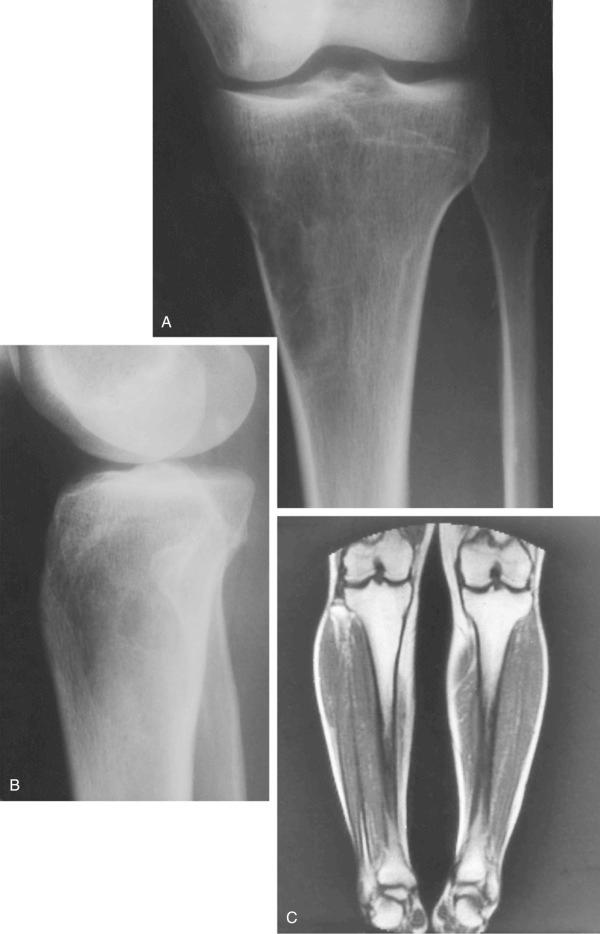
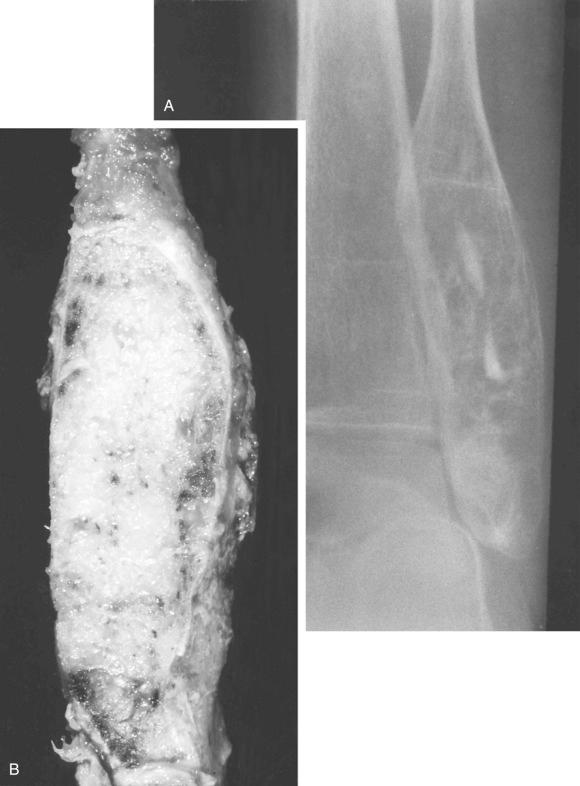
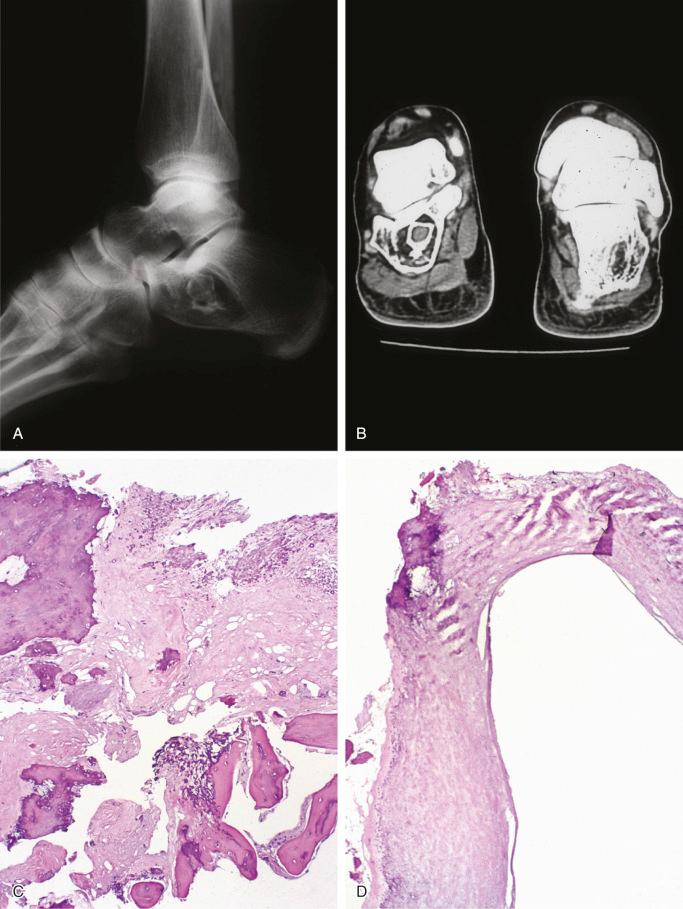
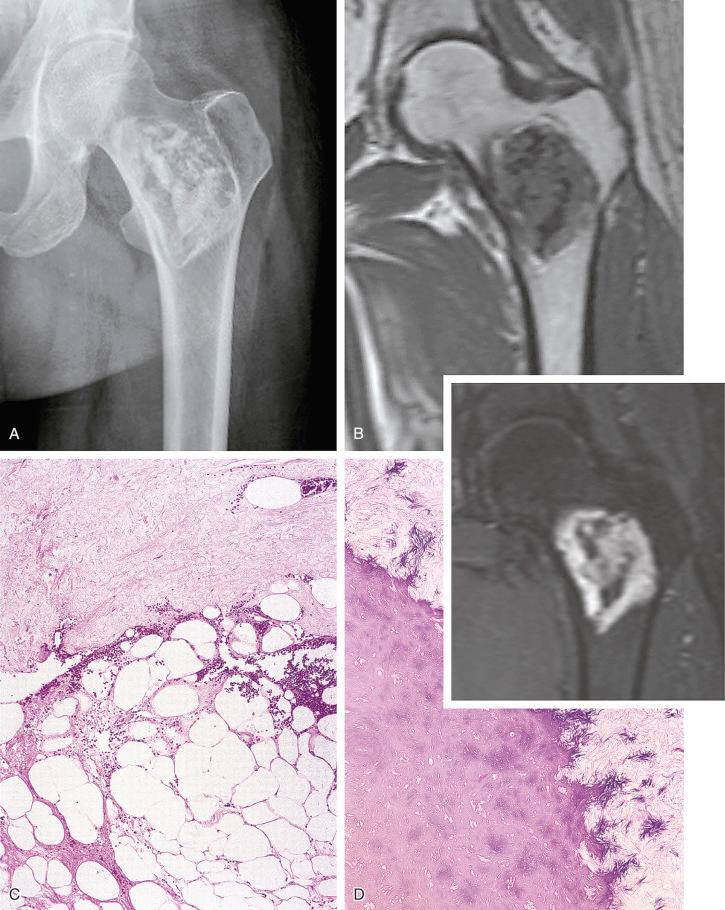
The gross appearance of lipoma is that of a well-circumscribed, lobular mass of adipose tissue (see Fig. 16-2 ).
Histologically, lipomas consist of mature adipose tissue and do not differ from ordinary lipomas of soft tissue ( Fig. 16-4 ). The presence of fat necrosis with dystrophic calcifications, which correspond to the central, niduslike opacity seen radiographically, is frequently seen ( Figs. 16-3 and 16-4 ).
Intracortical and subperiosteal lipomas are extremely rare. They radiographically present as intracortical or subperiosteal lucent lesions with intralesional trabeculations and foci of dotlike calcifications. Histologically, these lesions consist of mature adipose tissue and, similar to intramedullary lipomas, they do not differ from ordinary lipomas of soft tissue.
Parosteal lipomas are not true bone tumors and belong to the category of soft tissue lesions. Because of their association with the bone surface, parosteal lipomas may have some distinctive radiographic and microscopic features. Similar to intramedullary lipomas, parosteal lipomas of bone are extremely rare. They usually involve the metaphyseal parts of long tubular bones, but they may involve other bones, such as the flat bones of the trunk and the bones of the upper extremities ( Fig. 16-5 ). A characteristic feature of parosteal lipoma (not always seen) is a sclerotic, osseous pedicle that grows from the surface of the bone into the adipose tissue. This bony excrescence can dominate the lesion and can result in radiographic misdiagnosis of the lesion as an osteochondroma. Foci of cartilaginous metaplasia with formation of a cartilaginous cap may be present.
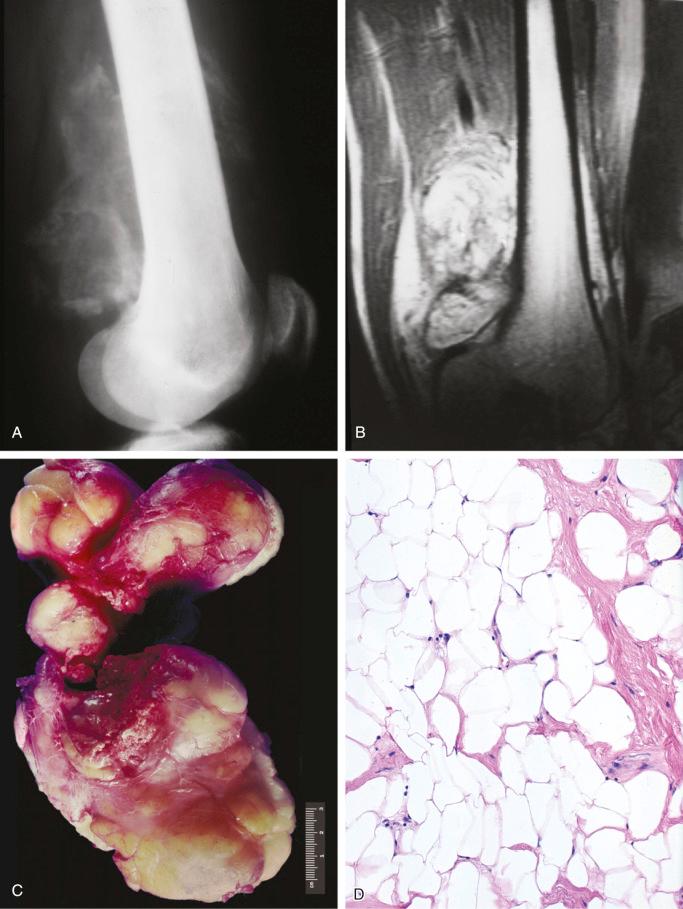
Liposarcoma is an extremely rare primary sarcoma of bone; it is composed of immature adipose tissue.
Liposarcoma of bone is one of the rarest of primary bone tumors. In 1982, Addison and Payne accepted only six examples of this entity in bone from previously published reports. The patients ranged in age from 15 to 53 years but usually had symptoms during the third and fourth decades of life. Reported cases of intraosseous liposarcoma involved the major long tubular bones, such as the femur, tibia, and humerus.
Radiographic features are nonspecific and show a bone-destructive process indicative of a malignant tumor.
Microscopically, liposarcomas in bone represent high-grade pleomorphic or round-cell (signet-ring) lesions. Some of these tumors may have features of myxoid liposarcoma.
The high-grade pleomorphic liposarcoma should be differentiated from malignant fibrous histiocytoma. In the evaluation of adipose tissue and differentiation of intraosseous lesions, the presence of residual nonneoplastic tissue of fatty marrow infiltrated by a nonlipomatous tumor should be ruled out before the lesion is classified as a liposarcoma. It is our impression that at least some of the cases previously reported as primary liposarcomas of bone would be currently classified as malignant fibrous histiocytomas.
Approximately 50% of patients who were reported to have primary liposarcoma of bone had metastases after amputation.
Vascular-cartilaginous hamartoma is a rare and distinct clinical, radiologic, and pathologic entity that presents at birth or early infancy as an expansile intraosseous lesion involving the central portion of one or more ribs.
Become a Clinical Tree membership for Full access and enjoy Unlimited articles
If you are a member. Log in here